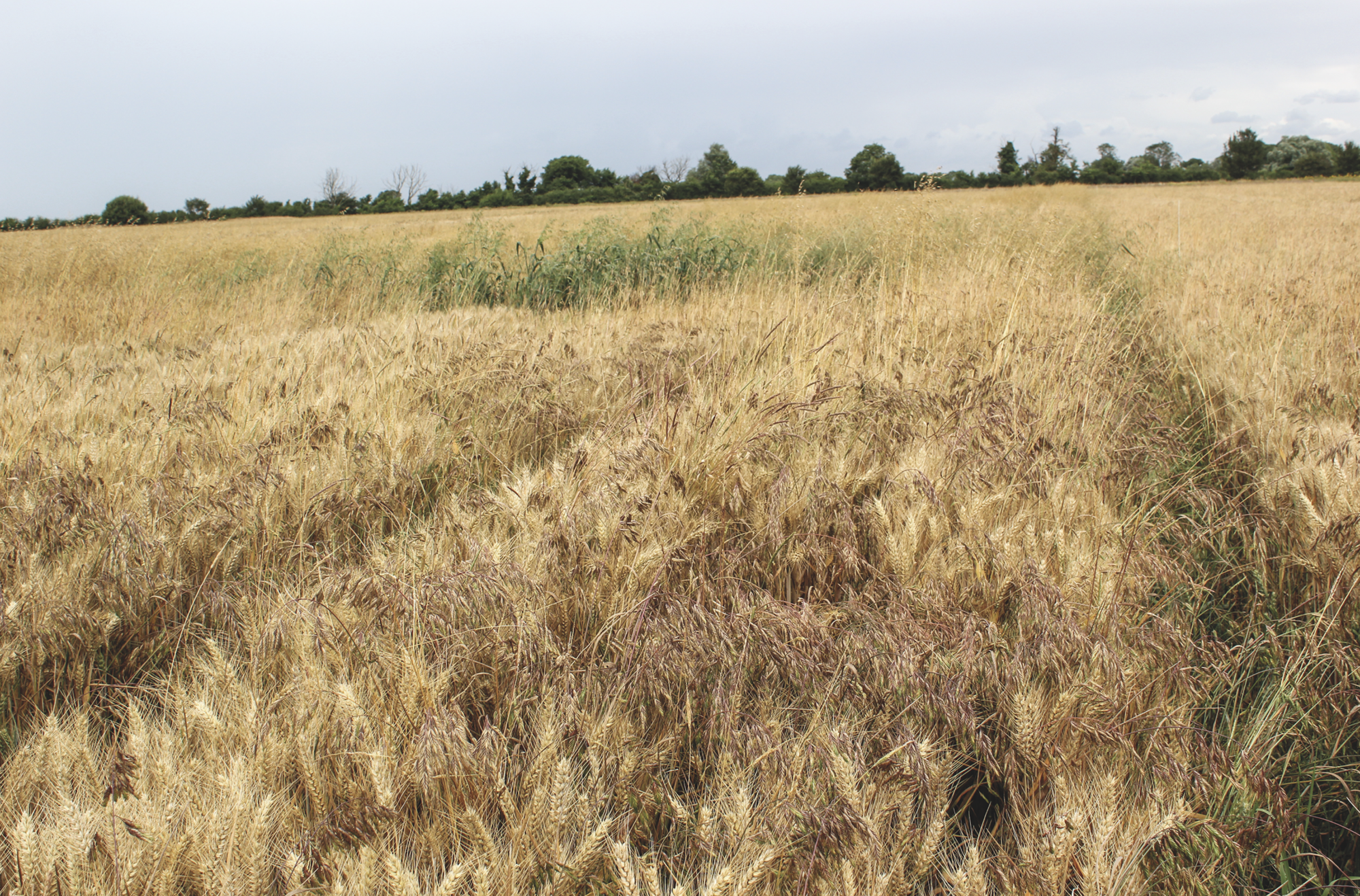Sixty-year-old herbicide proves increasingly important
2nd October 2021
Industry interest in a 60-year-old herbicide is at an all-time high this autumn as growers and agronomists across the country deal with an upsurge in grassweed problems.
Despite the extensive pipeline of chemistry becoming available since 1961 – from fops and dims to flupyrsulfuron, pendimethalin, Atlantis and flufenacet – the multi-site strength-in-depth of Avadex (tri-allate) is becoming more essential than ever in the integrated management of bromes, ryegrass, wild oats – not to mention rat’s tail fescue – as well as black-grass.
Herbicide-resistant black-grass, ryegrass and now sterile brome are clearly part of the problem, believes grassweed specialist, Barrie Hunt (right) of Avadex manufacturer, Gowan Crop Protection. But he sees this being made much worse by today’s climatic variability.
“Although there are obvious concerns over reduced weed sensitivity to flufenacet, most pre-em mixtures seemed to have worked well last autumn,” he points out. “But the cold, dry spring really put the cat among the pigeons. On the one hand, it meant little active weed growth in the main spring post-em spraying window, leading to poor later winter control. And on the other, decidedly thin and uncompetitive crops – especially later-sown wheats.
“As a result, any weeds surviving into the spring had a field day – as did late-germinating ones like wild oats – causing considerable consternation over the summer and substantial seed return to be dealt with this autumn.”
Sufficient control
Added to the extra seed return is the fundamental problem that, while still pretty effective, the autumn pre-emergence sprays central to most modern grassweed management programmes are simply not giving sufficient control.
Recent trials, for instance, show black-grass control of 60–70% can be expected from typical flufenacet-based pre-ems. At the same time, flufenacet and pendimethalin-based stacks
are giving 75–80% control of sterile brome and Italian ryegrass.
When intergrated with cultural controls these provide a good start. But, as several dry springs in a row have underlined, they can be nowhere near enough to prevent weed populations growing quite alarmingly wherever conditions allow.
“That’s why more and more people are turning to Avadex as a pre-em partner,” says Barrie Hunt. “It has stood the test of time, with activity against multiple enzyme systems making it harder for even the most adept herbicide-beating weeds to overcome.
“Analysis of 322 data points from trials over the past six seasons show Avadex Excel 15G adding an impressive average of 17 (and up to almost 30) percentage points to black- grass control in modern pre-em programmes – including those with the latest actives, aclonifen, and metribuzin. And we’ve seen similar improvements from using the micro-granules as a pre-em partner in dealing with both brome and ryegrass. This pushes overall control up to much more sustainable 80% and 90%+ levels.
Residual action
Besides its multi-site mode of action, Mr Hunt attributes this extra value to a residuality that allows good control of grassweeds emerging over an extended period as well as its physical chemical properties, which means it behaves differently from other cereal pre-ems.
In addition to dealing very effectively with winter-germinating wild oats, either the micro-granules or the newer liquid formulation (Avadex Factor) applied as part of autumn pre-em programmes have been shown to give ‘the bonus of’ the same 98%+ total wild oat control as spring- applied post-em standards; and with much less vulnerability to ‘difficult’ spring conditions too.
One notable field trial showed October- applied Avadex giving 90%+ control of tame oats sown fully five months later in March.
“Early germinating wild oats have approximately twice the impact on winter cereals yields of later germinators,” Mr Hunt stresses. “And we know autumn application can be as effective as any early spring post-em. So, it makes perfect sense to focus wild oat control on the autumn alongside other grassweeds wherever conditions allow.
“Approved for winter and spring wheat and barley plus winter rye and triticale, winter and spring linseed, Avadex Excel 15G has the greatest flexibility of use as well as concentration of tri-allate (2.25kg/ha at the recommended 15kg/ ha granule application rate),” he explains. “We are continuing to develop the versatility of the newer and less concentrated liquid, Avadex Factor (delivering 1.62kg/ha at the recommended 3.6-litre/ha rate) and hope to add more crops in the future.
“Despite the extra convenience of the liquid for sprayer-based regimes, Avadex granules remain by far the most popular formulation. There are numerous contractors with applicators across the country and many growers find using them valuable in taking the pressure off workloads at one of their busiest times. Others are fitting applicators to their drills or rolls to make tri-allate the core element of their pre-em programme without the need for an extra pass.”
To ensure they get the most from it, Mr Hunt provides five top tips for Avadex Excel 15G users:
Achieve the most effective seedbed – consolidating loose ‘puffy’ ground before sowing and avoiding cloddiness;
Drill crops at the correct depth (4cm for wheat) – avoiding applications to shallow- drillings and don’t consolidate (or roll) after drilling if seed depth will be affected;
Apply within 48 hours of drilling – unless conditions are very dry (in which case wait for rain) or too windy for spraying (which will disrupt the granule spread pattern);
Calibrate and check the applicator regularly – paying particular attention to the pipework and the cleanliness and angle of the deflector plates;
Avoid crops to be under-sown with grass or followed by oat or grass crops within 12 months – remembering that some cover crop mixtures contain oats.
He adds that Avadex granule applications following direct drilling should be quite safe given adequate slot closure and planting depth and, while soil contact is vital for activity, no problems have been reported with residue covers in the UK or in Canada where 75% coverage is common.

